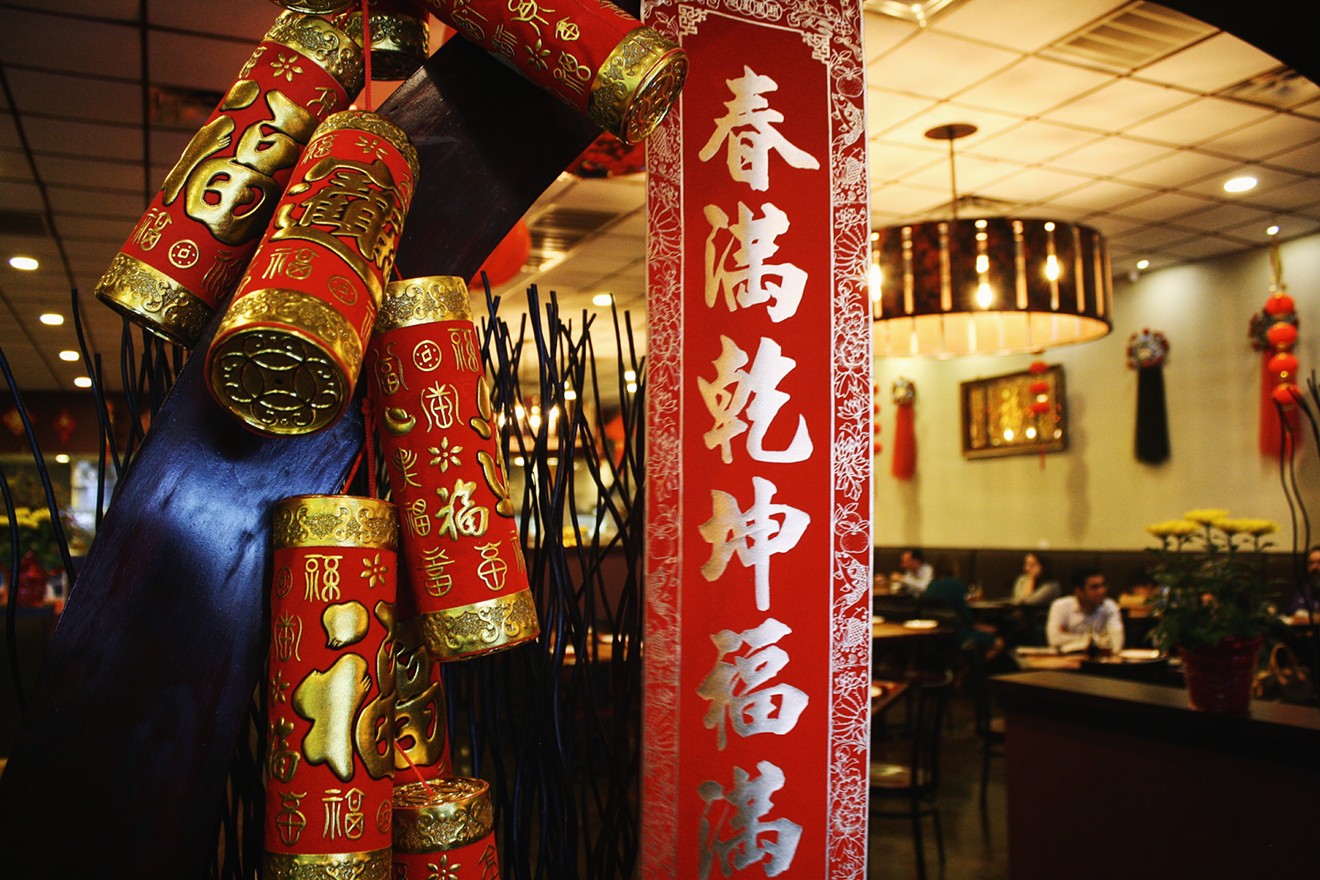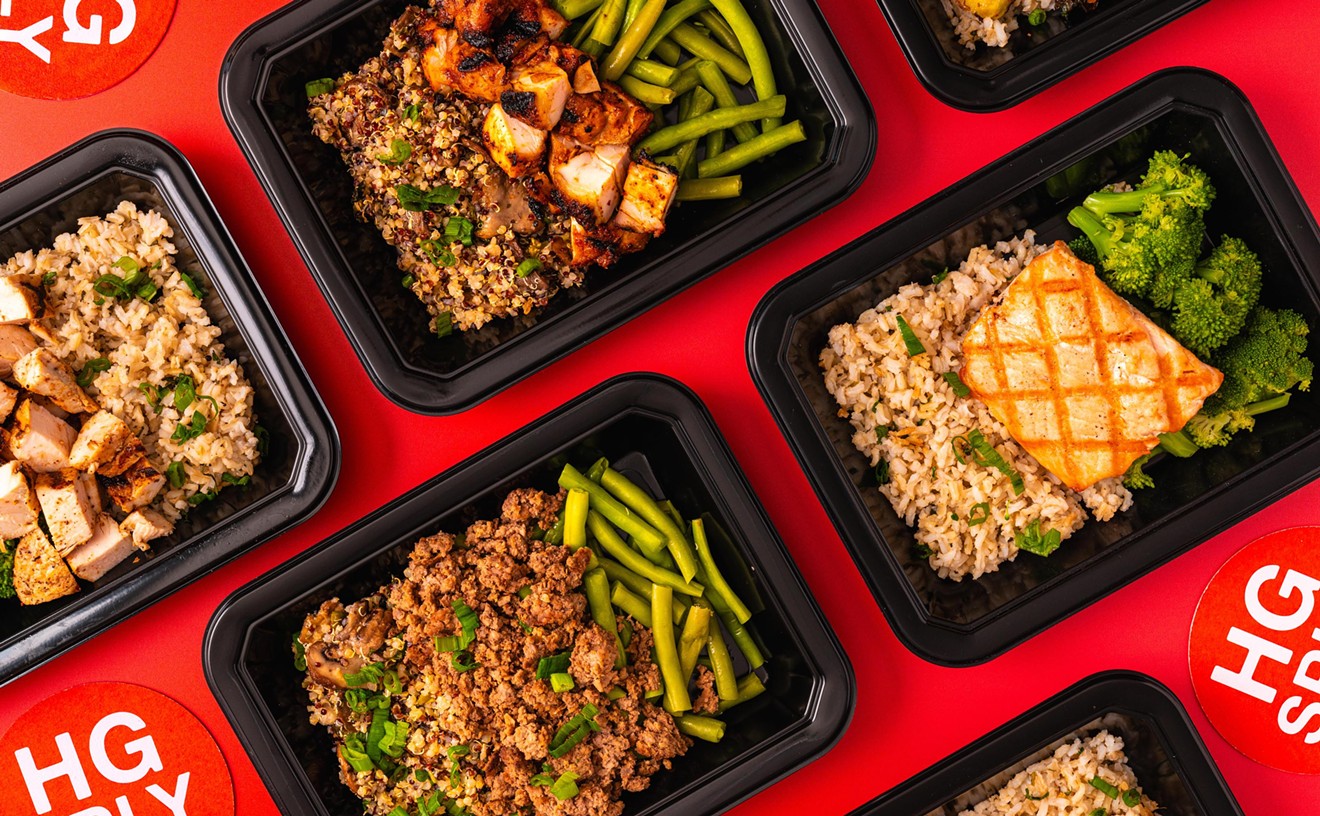"Doesn't everybody work so hard for this purpose?" said Jenny Kuo, who is, yes, my mother. (Who better to talk to about family tradition on Chinese New Year than my mom?) "Do you want to worry about food every day? Do you want to wear old clothes every day? Everybody wants to have a good life."
Nothing embodies these fundamental aspirations more than the food we eat, which is why every year, we host a lavish feast to beckon good fortune and ward off our superstitions. My mother recalled how her aunt, a profoundly traditional and superstitious woman, used to tirelessly prepare the holiday's meals the day before to avoid wielding a kitchen knife on the first day of the new year — and thus beginning anew, cleansed of aggression and bad vibrations. That type of poetic symbolism is everywhere in Chinese culture; even the red we wear and with which we deck our halls is a nod to good luck and happiness. Therefore, that symbolism naturally appears in almost every dish we eat on the eve and day of the Lunar New Year.
"Do you want to worry about food every day? Do you want to wear old clothes every day? Everybody wants to have a good life." — Jenny Kuo
tweet this
"Chinese New Year is a lot like American Christmas," Mom said. "In the old time, people were poor, and the only time you got to eat fish, pork, eggs, chicken and everything was the New Year. You'd save up the whole year, and on that day, everybody gets together and has good food."
But each Chinese family celebrates differently. Foods and conventions vary depending on where one is in China and are therefore influenced by the cuisine of the region. Northerners and southerners have fundamentally different palates and resources, as do the Chinese who live in Hong Kong, Taiwan and even Singapore. So this list is by no means all-encompassing of the food traditions of the entirety of the Chinese diaspora.
It is, however, a list of six because — you guessed it — the number six is symbolic. Since the number six in Chinese is a homophone of the word liú, which means "flow," it's believed the number is a harbinger of good luck and good fortune.
These dishes, of course, can be consumed year-round, but if you're Chinese and not too keen on the idea of cooking, or you're simply interested in learning a bit about Chinese cultural symbolism, this list of six essential Chinese New Year foods and where you can find them around town will hopefully help you ring in the Year of the Dog. Gong xi fa cai!
DUMPLINGS
Jeng Chi
400 N. Greenville Ave., No. 11
Folding and eating dumplings during the Lunar New Year is a custom that dates back dynasties and is shared by many Chinese families today around the world — although the custom has its roots in northern China, where the wheat used to make dumpling skins was once a more accessible staple than rice. The climate up north isn't as conducive to rice farming as it is down south, where it's warmer and wetter.
The dumpling, which most commonly comprises minced pork and cabbage stuffed inside a glutinous wrapper, looks a little like an ancient gold ingot. It's a symbol for prosperity and wealth, and legend has it that the more dumplings you eat during the New Year celebration, the more money you'll make.
You can find the perfect dumplings for the occasion at Jeng Chi in Richardson's Chinatown, fried in a pan, boiled or steamed to tender perfection in bamboo baskets. The restaurant is celebrated for its xiao long bao, dumplings filled with minced meat and steamy hot pork soup. But xiao long bao isn't the only attraction here. Perhaps partake in some pot stickers, lightly pan-fried to a caramel crisp. Maybe the shrimp and pork steamed dumplings, wrapped in a deep emerald green skin, or the chicken steamed dumplings, which are encased in a golden yellow dough.
The vegetarian steamed dumplings are also a must. They're all delicately hand-folded and steamed in house, a labor-intensive process that is both robotic and bewitching to watch. Whatever your prerogative, Jeng Chi has dumplings for days.

Sadly, we don't have a photo of Beijing Brothers' noodles, but these from Monkey King Noodle Co. will give you an idea why we love hand-pulled noodles so much.
courtesy Monkey King
Beijing Brothers
820 S. MacArthur Blvd., No. 112, Coppell
The literal translation of changshou mian is "long-life noodles," and they're eaten on birthdays and on Chinese New Year as a wish for a long, happy and healthy life. It doesn't really matter how they're prepared — in a soup, pan-fried, dry or sauced; the point is that they're served uncut. The longer the noodle, the better. And since the dish is an emblem of longevity and vitality, it's also considered a bad omen to break apart the noodle mid-slurp.
Noodles are prolific in Chinese cuisine, so you can find a restaurant just about anywhere in the DFW area that will serve them. But what makes Beijing Brothers special is its commitment to hand-pulling its noodles in house and in plain view of diners. A hand-pulled noodle, to me, at least, is homier, chewier and tastier, taking on sauces with more ease. At Beijing Brothers, the noodles come in four uncomplicated varieties: duck, seafood, beef and dan dan, which is a nutty, meaty and spicy Sichuan noodle dish. Stop by this joint in Coppell for a New Year's feast when you add on the brothers' prized Peking duck.
CURED MEAT (LAROU)
Sichuanese Cuisine
141 W. Spring Creek Pkwy., No. 405, Plano
2001 Coit Road, Plano
The Chinese have been drying and curing meats for thousands of years, and the process was a necessity before the advent of refrigeration. Nowadays, it's still commonplace to see racks of flayed fish and duck, as well as Chinese sausages, wrapped around poles, drying in preparation for New Year festivities. Historically, during layue, the 12th lunar month, people made year-end animal sacrifices to the gods, and what was left needed to be saved and preserved.
Preserved pork, or larou, is perhaps the most common, and at Sichuanese Cuisine in Plano, cured and smoked fatty pork belly is sautéed with cabbage. The dish is definitely on the greasy side, but you're eating pig fat, so something's gotta give. The curing and smoking process gives the meat a funky, pungent intensity, which doesn't necessarily sound like the most appetizing description.
But there's also something incredibly umami about this dish. It's smoky, salty, a little sweet and just exploding with well-rounded flavor. The taste lingers in your mouth, but it's the kind of lip-smacking goodness that keeps you wanting more. Temper this flavor punch with a side of bok choy and mushrooms and a bowl of rice. You won't be disappointed.
RICE CAKES (NIAN GAO)
Fortune House Chinese Cuisine
8150 N. MacArthur Blvd., No. 190, Irving
Nian gao is my family's most coveted tradition; it's the dish my mother never neglects on New Year's Eve, and she cooks a lot of it. They're flat, oval-shaped, sticky rice cakes, sautéed in soy sauce with shredded pork, mushrooms and cabbage. My mother likes to throw in some dried fungi and miniature shrimps for a more fragrant finish.
Like most of the New Year food traditions, nian gao is believed to bring prosperity. Its pronunciation sounds like "year high" in Chinese, and that signifies a higher income, higher status, growth and the general promise of a more fruitful year. The term then correlates with the Chinese axiom "nian nian gao sheng," which translates to "may you reach higher and higher year after year."
You might also see a sweet nian gao, which looks like a solid sticky pudding cake. At my house, we slice it into thin squares, dredge them in egg and fry them in a pan until the egg wash browns and the cake pieces turn gooey. It makes for a great, hearty breakfast on New Year's Day. You can find sweet nian gao in Chinese supermarkets.
For the savory variety, go to Fortune House in Irving. The rice cakes here are perfectly chewy and can be made with beef, pork or chicken. The beauty of nian gao is that it's a super flavorful dish, but it's not too salty or overpowering. Don't be surprised if you've gobbled the whole plate. You can check off another Chinese New Year staple while you're here and order some xiao long bao, a customer favorite that makes this Shanghainese joint a must-visit.
WHOLE FISH
First Emperor Chinese Restaurant
200 W. Polk St.
Not only is a whole fish — head, tail, bones and all — an impressive sight for the dinner table, it's a sign of abundance. Like other Chinese food traditions, its significance rests in the language. The Chinese phrase you yu, "to have fish," is a homophone for you yu, "to have surplus." Most families will eat a whole fish, either steamed or pan-fried, the night before and save the leftovers for the New Year, which is symbolic of carrying over the fish's prosperity and inundating life with abundance.
My mother's take on the custom is to prepare and cook the fish and set it out on the table, but not eat it. She believes the more there is to bring into the New Year, the higher the chance we have for good fortune.
At First Emperor Chinese in Richardson, the faded floral wallpaper, dim lighting and dated pink-and-green color scheme leave much to be desired in a dining experience, and its meek exterior can be easily overlooked for the hustle and bustle of the Kirin Court parking lot across the street. But it's the kind of Chinese restaurant that so many of us hold dear — food over frill. The owners are cheery, helpful and eager to recommend.
While the tea-smoked duck and sesame cake are the stars, you can't miss the fish with garlic sauce. Quality matters here, so much so that this menu item isn't always available. The owners say they'll only buy fish if it's alive and fresh, and sometimes the season can be a bit slow. On a lucky day, you'll get this fish lightly fried, served under glistening red gravy and soft tofu. It's savory, slightly spiced and slightly sweetened with fermented rice wine. Ladle the sauce over piping-hot white rice and rejoice in your newfound prosperity. But don't forget to doggy-bag it!
GOOD FORTUNE FRUIT
99 Ranch (or wherever you shop for groceries)
Multiple locations
In the weeks leading up to the Lunar New Year, you might see potted orange trees decorating Chinese markets, restaurants and home entryways. It's a bit like putting up a Christmas tree or stringing up lights, a cheerful sign that the holidays are just around the corner. The fruit that we eat, aside from being a daily postdinner digestive, bears great significance during the New Year festivities, too. Lunar New Year always falls at the tail end of winter, which means the fruits that are available tend to be limited to those that thrive in colder weather, like oranges, tangerines and pomelos. They're usually given as gifts to bring the recipient good fortune throughout the coming year.
Legend has it that an orange, which looks like the sun, is aligned with the positive yang forces of the earth, making this fruit a highly auspicious symbol of abundance and happiness. It's also common to give mandarin oranges with red envelopes to children to bring them good fortune as well. Some families also put oranges in their rice containers for good blessings.
You can find oranges and other citrus fruits at your neighborhood grocery store, but I'd like to think the fruits at 99 Ranch or the local Chinese markets are imbued with the holiday spirit and the bountiful well-wishes for a happy, healthy and prosperous new year.
















